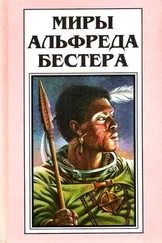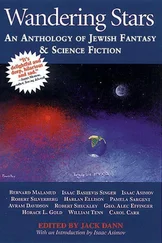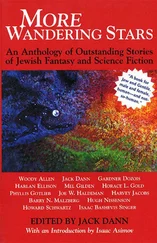THE BEST STORIES FROM THE FAMOUS STAR COLLECTIONS
FREDERIK POHL
Introduction
In 1953 the first volume of Star Science Fiction Stories appeared. It was a curious, hybrid publishing format, not quite a magazine and yet not very like the ordinary varieties of book. Its plan was simply to find enough of the best science fiction stories that could be had and to print them; and the one editorial rule established was that they must never have been published before.
It is only rules of that sort—mechanical rules, rules which admit of a simple yes-no answer—that can rigorously be applied in the selection of science fiction stories. Every other rule begins with a numerous class of exceptions. Science fiction is not stories about the future. Or about space. Or about technology. It is all of these things, and more than them. Science fiction lies in the eye of the beholder. In fact, said the introduction to that first volume of Star, it is a limitless field, as spacious as space itself. Publisher, critic, and a good many readers have a tendency to think of science fiction as one of the "categories" of publishing, in the specific sense of the term, like detective stories and Westerns. But unless you can think of The Big Sky as a Western or Hamlet as a whodunit, you can hardly class in a tight little group so widely variant an assortment of stories as justly fit under the common label of science fiction.
Was that a fair estimate of the situation? Well, let's look at the record.
Since then there have been eight volumes of one sort or another in the Star series. The aggregate is seventy-five stories, amounting to some half-million words. They have among them carried us to nearly all the planets of the solar system, including our own earth (both surface and interior) and its moon; we have circled many foreign stars and wandered in the space between them. In time we have seen both past and future—including a past that never really was (see Bester's "Disappearing Act") and futures that, heaven grant, will never be at all. (See the assorted waspish predictions of Kornbluth, Matheson, and Bloch.) Earth itself was invaded many times, for many reasons; half a dozen times civilization was destroyed. (And half ,a dozen more times it should have been. Surely such surviving cultures as those of Kornbluth and Matheson, for two, are really better off dead.)
But these themes, situations, and events are no more than the pegs on which Star's fifty-six contributors hung their imaginings. Science fiction can be, when it chooses, a literature of ideas. If Star proved anything in seven years, surely it proved that there are ideas which can be explored in no other way.
The stories included in this volume can speak for themselves, but perhaps we can spare a word for some which, for one reason or another, had to be left out. The only volume in the series not represented is Star Short Novels, and that because, though each of its three stories —by Lester del Ray, Jessamyn West and Theodore Sturgeon—was a memorable work, any one of them would by sheer mass have squeezed out three or four others. It seemed a necessary rule that the very longest stories simply could not be made to fit.
The other ground rule observed in constructing the present volume was that, given a choice, the story less frequently reprinted would get the nod. On that sharp edge of decision were lost such ornaments as the Bradburys, the Asimovs, the Sheckleys, and a dozen others. A few stories simply would not allow themselves to be left out for any reason at all, and so Leiber's tale is here in spite of its having appeared in a previous collection, Clarke's despite its having formed the basis of his full-dress novel of the same name, and so on. But the number is quite few. Of the fourteen stories herein, only four have appeared anywhere in this country except for their first use in Star itself.
It seems at this point more than likely that there will be no future issues of Star. It would not be fitting to see it end without some words of thanks. I acknowledge deep gratitude, then, to the writers who gave it fine stories, to the critics who treated all of its incarnations most kindly and, most of all, to Ian Ballantine, least remote of publishers, who conceived the plan of the series in the first place and, with endless patience, saw its editor through eight ill-kept deadlines.
FREDERIK POHL
Red Bank, New Jersey February, 1960
GERALD KERSH
Whatever Happened to Corporal Cuckoo?
Gerald Kersh writes much and very well, and Star's pleasure in having a Kersh to offer is one that has been shared by most of the best magazines in the world. Yet no matter where he appears, in sober, mass-circulation company or in small and select, the man has always his own flavor. He tastes of the wry, he exudes the not-quite-probable. This is the bouquet of the science fictioneer; and when Kersh turns to our sort of subject matter he shapes it with a sure hand—as you can see for yourself in—
Whatever Happened to Corporal Cuckoo?
Several thousand officers and privates of the U. S. Army who fought in Europe in World War II can bear witness to certain basic facts in this otherwise incredible story.
Let me refresh my witnesses' memories:
The Cunard White Star liner Queen Mary sailed from Greenock, at the mouth of the river Clyde, on July 6th, 1945, bound for New York, packed tight with passengers. No one who made that voyage can have forgotten it: there were fourteen thousand men aboard; a few ladies; and one dog. The dog was a gentle, intelligent German shepherd, saved from slow and painful death by a young American officer in Holland. I was told that this brave animal, exhausted, and weak with hunger, had tried to jump over a high barbed-wire fence, and had got caught in the barbs on the top strand, where it hung for days, unable to go forward or backward. The young officer helped it down, and so the dog fell in love with the man, and the man fell in love with the dog. Pets are not allowed on troopships. Still, the young officer managed to get his dog on board. Rumor has it that his entire company swore that they would not return to the United States without the dog, so that the authorities were persuaded to stretch a point, just for once; this is what Kipling meant when he referred to The Power Of The Dog. Everyone who sailed on the Queen Mary from Greenock on July 6th, 1954, remembers that dog. It came aboard in a deplorable state, arching its bedraggled back to ease its poor injured stomach, and when you stroked it, you felt its skeleton under the sickly, staring coat. After about three days of affectionate care—half a hundred strong hungry men begged or stole bits of meat for its sake—the dog began to recover. By July 11th, when the Queen Mary docked in New York, the dog was taking a dog's interest in a soft rubber ball with which several officers were playing on the sun deck.
I bring all this back into memory to prove that I was there, as a war correspondent, on my way to the Pacific. Since I was wearing battledress and a beard, I also must have been conspicuous, that voyage. And the secret school of illicit crapshooters must remember me with nostalgic affection: I arrived in New York with exactly fifteen cents, and had to borrow five dollars from an amiable Congregationalist minister named John Smith, who also will testify to the fact that I was on board. If further evidence were needed, a lady nurse, Lieutenant Grace Dimichele, of Vermont, took my photograph as we came into port.
But in the excitement of that tremendous moment, when thousands of men were struggling and jostling, laughing and crying, and snapping cameras at the New York skyline, which is the most beautiful in the world, I lost Corporal Cuckoo. I have made exhaustive inquiries as to his whereabouts, but that extraordinary man had disappeared like a puff of smoke.
Читать дальше
![Альфред Бестер Star of Stars [Anthology] обложка книги](/books/398777/alfred-bester-star-of-stars-anthology-cover.webp)







![Альфред Бестер - Миры Альфреда Бестера. Том 3 [Авторский сборник]](/books/405485/alfred-bester-miry-alfreda-bestera-tom-3-avtor-thumb.webp)

